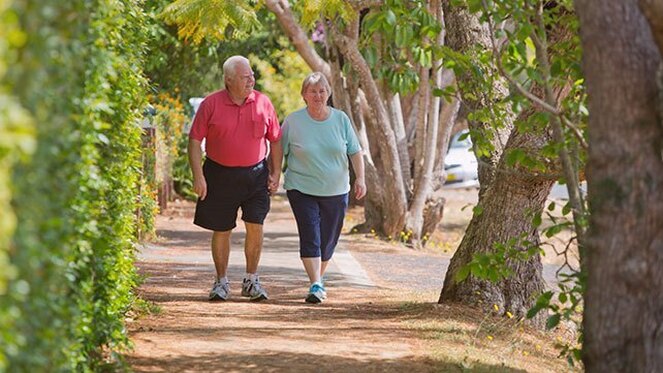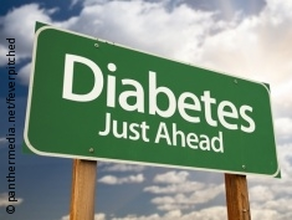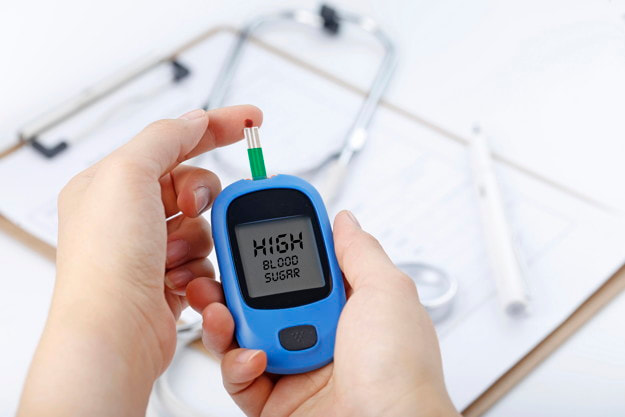 Did you know that around one third of our population are living with Non Alcoholic Fatty Liver Disease? You may be wondering what is Non Alcoholic Fatty Liver Disease (NAFLD) or how do I know I have it, or what can I do to prevent it? Nonalcoholic fatty liver disease is an umbrella term for a range of liver conditions affecting people who drink little to no alcohol, or less than 2-3 standard drinks per day. As the name suggests, the main characteristic of NAFLD is too much fat stored in liver cells. Here we will discuss what NAFLD is, what causes NAFLD, and what you can do to reverse NAFLD. How common is NAFLD in Australia? It is estimated that around 30% of the Australian population has NAFLD, with this number increasing to around 75% in people who are obese or have Type 2 Diabetes. What causes NAFLD? NAFLD is generally linked to overnutrition, and is strongly associated with
What are the symptoms of NAFLD and how is it diagnosed? NAFLD generally does not cause any symptoms until it progresses to a more advanced form of liver disease, therefore most people do not know that they have the condition unless screened through blood tests or incidental findings through ultrasound. To accurately diagnose NAFLD, an ultrasound or biopsy is performed. What are the health consequences of NAFLD? Individuals with NAFLD have a higher prevalence of coronary heart disease, cerebrovascular disease, such as a stroke, and peripheral vascular disease, with cardiovascular disease being the leading death of patients with NAFLD. And their risk for cardiovascular disease is independent of any other risk factors for CVD such as stress, smoking, inactivity, etc. What is the treatment for NAFL? The first line treatment for NAFLD or any liver disease is lifestyle changes and therapy. This may occur in conjunction with medication management of the person’s other conditions such as diabetes, hypertension or high triglyceride levels. What forms of lifestyle therapy are beneficial? Weight gain is a major determinant of NAFLD, therefore weight loss is a key goal of treatment, with as little as 2-3% reduction in body weight causing a reduction in liver fats by as much as 20-30%. However the most benefit and possible reduction of NAFLD is seen with 7-10% of body weight losses. When looking at the research, neither exercise nor nutrition efforts alone are the most effective, but a combination of both have been shown to have the best effect on weight loss. However, further research has demonstrated that reductions in liver fat%, along with improvements in other health factors such as triglyceride levels, blood pressure, body fat percentage and improvement in fitness, leading to a reduction in CVD and all cause mortality can be achieved through exercise, independent or regardless of weight loss. Therefore exercise is a key component of successful treatment of this condition. What exercise is best in treating NAFLD? There has been various research looking at both aerobic exercise and strength training in the treatment of NAFLD, with aerobic exercise being superior and recommended. In terms of type, frequency, time and intensity of that aerobic exercise, there have been benefits shown for both moderate and vigorous intensities of varying durations. However the general rule is to: Accumulate 150–300 min per week of moderate‐vigorous‐intensity aerobic exercise, on at least 3 days of the week. This could include walking, cycling, running, cross trainer, swimming, type activities raising your heart rate to a minimum moderate level. It has also been shown that increasing your intensity and heart rate to higher levels further benefits for your fitness, reduces blood glucose levels and decreases your risk of mortality; and may have better effects in reducing liver fat for people with more advanced liver disease beyond NAFLD. Lisa Parkinson Accredited Exercise Physiologist & Credentialled Diabetes Educator.
1 Comment
 What is pre-diabetes? Pre diabetes is a condition when a person has blood glucose levels that are higher than normal, but not high enough to be diagnosed with type 2 diabetes. There are two types of pre-diabetes conditions:
Do people experience symptoms with pre-diabetes? Generally most people do not experience symptoms with pre-diabetes or they are so slight that they do not notice them. Pre Diabetes is the precursor to Type 2 diabetes, which is often called a ticking time bomb or a silent killer, as many people do not know they have the condition. It’s estimated that around two million Australians have pre-diabetes, with one in three people with pre-diabetes going on to develop type 2 diabetes. If we have pre-diabetes, what can we do to prevent ourselves from developing type 2 diabetes? We can help to manage our pre-diabetes and reduce the risk of developing type 2 diabetes and heart disease by making healthy lifestyle changes. These include:
What exercise is recommended for someone with pre-diabetes? Regular exercise can help to manage your weight and also help to reduce your blood glucose levels; and help to manage other risk factors such as blood pressure and cholesterol levels. The Australian guidelines suggest that all Australians undertake 30 minutes of planned moderate intensity aerobic exercise on at least 5 days of the week. So this could include walking or swimming, or could involve sports such as tennis and squash. The 30 minutes on 5 days a week is the bare minimum recommended, as evidence has found that better health outcomes are achieved by increasing your exercise up to 60 minutes a day. In addition to the aerobic exercise described above, undertaking some form of resistance training where you are using your muscles and working them to fatigue twice a week is also recommended, as this will help to improve your insulin resistance, and thereby reduce your blood glucose levels even more. If you are new to exercise, chatting to your doctor or local Exercise Physiologist is a great place to start to ensure you are safe to exercise and they can guide you on the right exercises for you. Lisa Parkinson Accredited Exercise Physiologist and Credentialled Diabetes Educator  What is diabetes? Diabetes is a metabolic condition which results in an elevated fasting blood glucose level due to either a defect of our body to produce the hormone insulin, or an inability of our body to use insulin. Why is insulin important, what does it do? Insulin is a hormone that allows our bodies to use the glucose from the food that we eat for energy, and it also acts like a key that unlocks cells and allows glucose to be stored for future use. Without insulin working well, the glucose from food remains in our blood and our blood glucose levels rise to a high level. This is not normal for our bodies. When left untreated this can cause a number of consequences to our health including blindness, nerve damage, limb amputation, kidney failure, heart attack, stroke, and even death. How common is diabetes? It’s estimated that around 1.7 million Australians are living with diabetes, with one person being diagnosed every 5 minutes, and it contributes to around 11% of deaths in Australia. What are the different types of diabetes There are a number of different types of diabetes, with the most common being type 1 and type 2 diabetes Type 1 diabetes is an autoimmune disease and is commonly diagnosed in children and young adults. Type 2 diabetes is the more common form of diabetes, affecting 85-90% of all people with diabetes. While it usually affects older adults, more and more young people, even children, are developing type 2 diabetes. Unlike type 1 diabetes, your risk of developing type 2 diabetes is strongly associated with lifestyle factors such as high blood pressure, overweight or obesity, insufficient physical activity and a poor diet. How can exercise help to prevent type 2 diabetes? No one knows exactly what causes type 2 diabetes, but lifestyle factors, such as being overweight and being inactive, strongly increase your risk. Statistics show that 53% of the diabetes burden is due to overweight and obesity alone. Increasing your exercise and physical activity levels is an easy way to help reduce your risk! Can exercise help people living with type 2 diabetes? Yes it certainly can. Although there is no known cure for diabetes, exercise can be a powerful tool for managing this condition. Exercise helps to:
How much exercise is recommended? The actual dose of exercise that is recommended to prevent and to assist in managing type 2 diabetes is to accumulate 2 and a half hours of moderate intensity exercise across the week, or half that amount of high intensity exercise, in addition to 2 strength training sessions. The strength training exercises should aim to target the major muscle groups within the body.
It’s important to monitor blood glucose levels, particularly for people on insulin, before, during and after an exercise session, and it is also important to wear good supportive footwear and to check feet for problems each exercise session. Lisa Parkinson Accredited Exercise Physiologist/Diabetes Educator #Type2Diabetes What is it?
According to the most recent figures from the National Diabetes Service Scheme, 1,302,303 Australians are living with diabetes, and 87% of those are living with type 2 diabetes. Type 2 diabetes is a metabolic disease characterised by having either peripheral insulin resistance, simply put means our body's cells resist insulin's help in removing and storing glucose from our bloodstream, or relative insulin deficiency which means that our body is not producing enough insulin to assist our body to store away glucose from our bloodstream. This results in elevated blood glucose levels, which if not managed, leads to a number of complications, and a decreased lifespan. Why do I have it? There are many factors which can lead to Type 2 diabetes or increase a person's risk of developing type 2 diabetes. People are at a higher risk if they:
How can exercise help? Exercise, along with other lifestyle interventions, plays an important role in the management of type 2 diabetes. The reasons for the improvement in blood glucose levels from exercise are complex, but put simply exercise helps to improve insulin sensitivity (increased effectiveness/use of insulin by our body), and increases the amount of glucose taken up by the muscles (which are not dependent on insulin), both resulting in lowered blood glucose levels in the hours following exercise. Improvements in blood glucose values towards optimum levels commonly leads to a decrease in type 2 diabetes medication use. And of course, exercise helps to prevent and manage other chronic conditions, provides improvements in physical health and fitness, strength, and bone mass which improves our overall physical function and independence. What type of exercise, and how do I get started? The research shows that both aerobic exercise, and strength training alone can provide benefits, however a combination of the two has been shown to have the most benefit in reducing blood glucose levels. The recommended amount of exercise from Exercise and Sports Science Australia is:
To gain benefits to our health we need to undertake aerobic exercise for at least 10 minutes continuously each bout, and for those who have not exercised before, this is a great place to start. Start with a duration of exercise you can handle, undertaking an activity that you enjoy (walking, bike riding, swimming, arm cycle, etc), and then build your way up to 10 minutes + from there. You could undertake multiple 10 minute bouts across the day, or undertake a larger duration/chunk of exercise (such as 30-60 minutes) all at one time. Strength training should include multi joint exercises, utilising large muscle groups, 8-10 repetitions, 2-4 sets of exercises. Resistance bands can be a great way to start at home, however progressing to higher weight (dumbbells/resistance machines/cable pulleys) has been shown to have a greater effect for people with diabetes. Questions? Please feel free to reach out to us with any diabetes and exercise concerns, or call or book online to have an individual assessment and program developed to meet your needs. |
AuthorSLisa Parkinson Archives
July 2024
Categories
All
|

 RSS Feed
RSS Feed